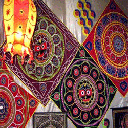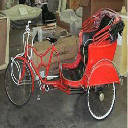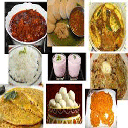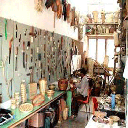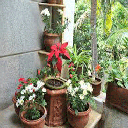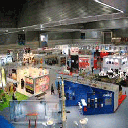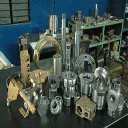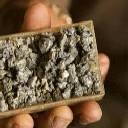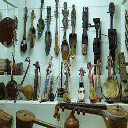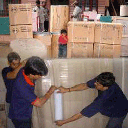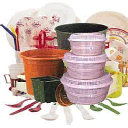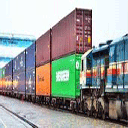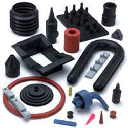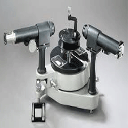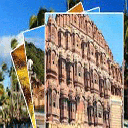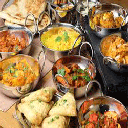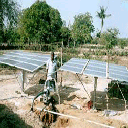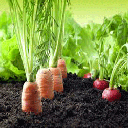Himachal is situated in the western Himalayas. Covering an area of 55,673 kilometres (34,594 mi),Himachal Pradesh is a mountainous state with elevation ranging from about 350 metres (1,148 ft) to 7,000 metres (22,966 ft) above the sea level. Himachal Pradesh was anciently known as Dev Bhumi (The Abode of Gods) and is known to be abundant in natural beauty Himachal Pradesh is a state in Northern India. It is spread over 21,495 sq mi (55,673 km²),and is bordered by the Indian states of Jammu and Kashmir on the north, Punjab on the west and south-west, Haryana and Uttar Pradesh on the south, Uttarakhand on the south-east and by the Tibet Autonomous Region on the east. The literal meaning of Himachal Pradesh is Region of snowy mountains. Himachal Pradesh can be divided into three zones. They are the outer Himalayas or the Shivaliks, the inner or the middle Himalayas and the greater Himalayas or the Alpines. The Shivaliks include the districts of Hamirpur, Kangra, Una, Bilaspur, and the lower parts of Solan, Sirmaur and Mandi. The altitude of lower Himalayas ranges between 350 m to 1500 m and the rainfall in this zone ranges between 150 cm to 175 cm. The middle region includes the parts of Sirmaur, Mandi and parts of Kangra, Shimla and Chamba and experiences rainfall between 75 cm to 100 cm. This zone remains under snow for almost give to six months. The Alpine zone is at an altitude of 4,500 m and beyond and comprises of the Kinnnaur and Pangi tehsils of Chamba and some parts of Lahaul and Spiti. Nature has endowed Himachal Pradesh with a wide range of agro-climatic conditions, which have helped the farmers to cultivate large varieties of fruits ranging from temperate to sub-tropical. The main fruits under cultivation are apple, pear, peach, plum, apricot nut and citrus fruits like mango, litchi, guava and strawberry. The State is speedily moving towards becoming a "Power State"of the Country. Ti’s extremely rich in its hydel resources. The state is having about twenty five percent of the national potential in this aspect. It has been estimated that about 20,300 MW of hydel power can be generated in the state by the construction of various hydel projects on the five river(Chenab, Rabi, Beas, Satluj and Yamuna) basins no matter they are major medium or small. The state government has been giving the highest priority for its development, since hydel generation can meet the growing need of power for industry, agriculture and rural electrification. It is also the biggest source of income to the state as it provides electricity to the other states also. One of the major project on river Sutlej in the state is the Nathpa Jhakri which generates nearly 1500MW of electricity. The following project is funded by World Bank. Himachal Pradesh was under the direct control of the British colonial rule in the mid 19th century. Also, the state was the summer capital of India during the British colonial rule. Hence, the standard of education provided in the state has reached to a considerably high level. The state has several highly reputed educational institutions for higher studies. The Indian Institute of Technology Mandi, Himachal Pradesh University (HPU) and the National Institute of Technology (NIT), NIT Hamirpur are some of the pioneer institutions located in the state. The University Grants Commission (UGC) has allocated Dr. Yashwant Singh Parmar University of Horticulture and Forestry has gained a unique distinction not only in the nation but also in whole of Asia for imparting teaching, research and extension education in horticulture, forestry and allied disciplines. Solan Homoeopathic Medical College & Hospital is the first & only Homoeopathic Medical College in the state of Himachal Pradesh, Himachal has one of the highest literacy rates in India. Hamirpur District is among the top districts in the country for literacy. Education rates among women are quite encouraging in the state. Himachal Pradesh is home to many educational institutions offering a wide variety of courses. There are five universities, two medical colleges, four dental colleges and two engineering colleges in the state. There are over 10,000 primary schools, 1,000 secondary schools and more than 1,300 high schools in Himachal. In meeting the constitutional obligation to make primary education compulsory, Himachal has now became the first state in India to make elementary education accessible to every child in the state.
Kangra Fort:The ruins of this formidable fort of the rulers of Kangra are located on a strategic height, overlooking the Ban Ganga and Manjhi rivers. There are two Hindu temples within the fort’s compound; one dedicated to Ambika Devi (a local deity) and the other to Laxminarayan. A Jain temple is also present with the stone image of Adinath. The history of this fort is synonymous with Kangra town. The town belonged to him who owned the fort. The most attractive part of this Fort is inside the Darshani Darwaza. This gate is one of the oldest standing structures. It opens up to a large stone-paved courtyard surrounded by various chambers. Thanks to the architects for their matchless creation. Sujanpur-Tira:About 80 km from Kangra and 40 km southeast of Palampur, is the fortress of Sujanpur-Tira, located on the right bank of river Beas. It was constructed by the rulers of Kangra in the early 18th century and was a favourite residence of Raja Sansar Chand, a great patron of Kangra miniature paintings. This fortress has some beautiful wall paintings which are worth seeing. Maharana Pratap Sagar Lake:The Maharana Pratap Sagar Lake, created in 1979 by the construction of Pong Dam across the river Beas, lies to the southwest of Kangra district. It was named after the great patriot Maharana Pratap (1572-97 AD) who struggled valiantly for freedom of Mewar-as for the principle of independence. Over the river Beas, the Pong dam was completed in 1976. Its reservoir covers an area of about 45,000 hectares at maximum possible flooding. The level varies every season and averages around 30000 hectares. This large wetland when fully occupied during flood is a favoured stopover for migratory birds from central Asia. Masroor:Mansoor is situated 15 kms south of Kangra, famous for its monolithic rock temples. There are 15 rocks cut temples in Indo-Aryan style which are richly carved. The temples partly ruined, now are profusely decorated with sculptural decoration, conceived in the same manner as the great temple of Kailash at Elora in Maharashtra with which they bear a striking similarity. The main temple is dedicated to Lord Ram, Lakshman and Mother Goddess Sita. Palampur:The picturesque little town of Palampur is about 45 km east of Kangra. The undulating expanses of tea gardens unfold the inimitable beauty of nature. The town came in to being when Dr. Jameson, Superintendent of Botanical Gardens, North-West Frontier Province introduced the tea bush here. Since then the town became a centre for European tea estate owner. Today, the “Kangra tea†with its centre at Palampur, has been internationally acclaimed. The town itself has some interesting colonial architecture and the area around is encompassed by old forts and temples. East of Palampur is the 9th century old Baijnath temple dedicated to Lord Shiva. Kullu:The main tourist attraction of Kullu is the Raghunath Temple. And In Bajaura there is a famous temple of Basheshar Mahadev with fine stone carvings and sculptures. Manali:Once called the "end of the habitable world," Manali is an important hill station of northern India and is the destination of thousands of tourists every year. Its cool atmosphere contains many beautiful sites & temples ie. Manali is known for its shiny gompas or Buddhist monasteries. Shimla:Shimla truly known as "Destination for all seasons". Christ Church is the second oldest church and is one of the landmarks of Shimla. Himachal State Museum & Library it has a good collection of ancient historical sculptures, Kufri this hill famous for its trekking and hiking trails. Other Tourist Destination in Himachal Pradesh Kangra, Solan, Chamba, Kinnaur, Dharamshala, Mandi, Una, Lehul & Spiti .


